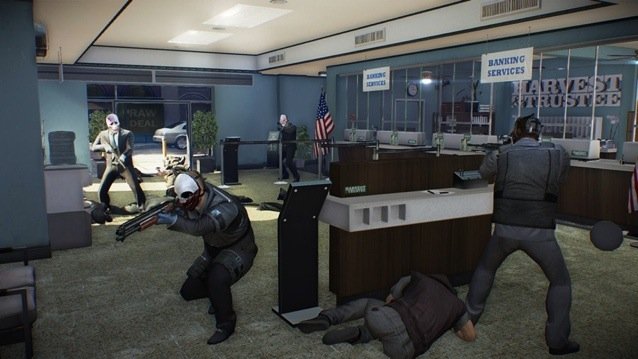

The opening ten minutes of Ori and the Blind Forest will make players cry. Let’s just get that out of the way upfront. The tears will come in more of a Pixar or Studio Ghibli kind of way than something like the opening of The Last of Us, but the emotions that the game stirs up in its prologue will carry the narrative for the next ten beautiful hours of platforming adventure.
Once players get through the soul-crushing prologue (which we’ll avoid spoiling), the real adventure begins. Ori and the Blind Forest is a 2D platform adventure game with gorgeous art that will remind players of Braid or Limbo and sends them into a maze-like 2D world in the traditional style of the Metroidvania genre. Players wield control of Ori, a small luminous creature that might remind players of a very agile squirrel or lemur. Players jump and climb through the 2D world, unlocking doors and solving puzzles, as Ori attempts to unite the elements of Water, Wind, and Warmth to restore balance to his broken world.
The game’s environment is one of its most powerful assets. The tone of the game feeds off of the tragic prologue and is elegantly executed with the use of a powerful original score, hand-drawn art, and intuitive controls. Ori’s surroundings remain consistently stunning through each of the game’s worlds. Each zone has a different palette and unique obstacles to keep things fresh, but the magic mood of the forest never fades to the background.
Although running and jumping through the dangerous forest may be intuitive, don’t get the false impression that this game won’t give players a challenge. As Ori levels up and unlocks new abilities by progressing through the game, or spending talent points in one of three specialized trees, the game’s puzzles increase in difficulty to give players something to do with those new abilities. Some of the abilities are pretty standard; double jump, wall climb, and glide for example. Other abilities feel unique to this world; such as a gravity-shifting orb to pull off impossible jumps. As more abilities are unlocked, players will be able to explore deeper and deeper into Ori’s dangerous world. The new abilities come fairly often and just as players start to master one, another will be added to the repertoire. One of the benefits of the short campaign is that nothing in Ori and the Blind Forest ever has a chance to start to feel stale.
While bouncing off walls and double jumping over dangerous gaps, Ori also has plenty of monsters to deal with. The combat is certainly not as advanced or engaging as the platforming in the game’s early levels, as Ori zaps enemies with spirit-fire. But the attack is aided by a very consistent auto-target that turns combat into more of an exercise in button mashing and diving out of the way of incoming attacks. The battles do become more exciting a few hours in, when Ori gains the ability to dash through the air and redirect enemy projectiles back in the opposite direction. This ability allows for some very difficult and intense areas that combine the need for platforming skills and precise projectile redirects.
Once players get the hang of platforming, fighting, and not getting lost; there is one other vital skill needed to survive in the Blind Forest: knowing when to save. Rather than establishing pre-determined save spots like most games, the developers of Ori leave it up to the player to decide when to drop a blue orb and save their progress. The idea isn’t entirely novel, but there is a unique twist to it; players use the same limited resource to save that is needed to use special attack abilities. When lots of extra energy slots are unlocked later in the game, this becomes less of an issue, but early on players are often punished for attempting to save their energy rather than dropping down a save spot after a challenging obstacle.
One of the pain points of the unique save system is that players can accidentally trap themselves in some ugly spots. A player can save the game with their last energy ball in a bad spot and get stuck behind a vicious obstacle that would be way easier with a few back up powers (trust me, I did this). Like many beloved platformers, the challenge is part of why fans get addicted to these games, so despite the frustration it causes, the additional challenge added by the save mechanic is part of what makes the game stand out from the crowd.
If the regular levels seem too easy, just wait for the gauntlet of auto-scrolling challenges that remove the ability to save and require mastery of all of the platforming and battling skills that Ori can handle. Even the most veteran platform addicts will likely stumble during these boss levels, which will likely require quite a few attempts from casual players.
From basic double jumping challenges to Portal-inspired vortexes that require gravity-defying leaps to survive, Ori offers plenty of beauty and challenge for 2D platforming fans. The story plays out subtly throughout the adventure and adds that something special to make the game more than just a pretty platforming journey. The game may not feel long enough to experienced platform players who can rush through the challenges, but at $19.99 we’re confident players will get their money’s worth.
Ori and the Blind Forest is now available on PC and Xbox One. The Xbox 360 version is slated for later this year. Game Rant was provided an Xbox One code for this review.




 MGS V: The Phantom Pain Pro Tip: Two Things To Do When Spotted By Enemies
MGS V: The Phantom Pain Pro Tip: Two Things To Do When Spotted By Enemies 9 Ancient Video Game DRM Schemes
9 Ancient Video Game DRM Schemes SOCOM 4 PS3 Trophies List
SOCOM 4 PS3 Trophies List Payday 2 Review: Law Enforcement Genocide with Friends
Payday 2 Review: Law Enforcement Genocide with Friends Sitting Up Straight Is Bad: The Right Way to Sit at a Desk
Sitting Up Straight Is Bad: The Right Way to Sit at a Desk